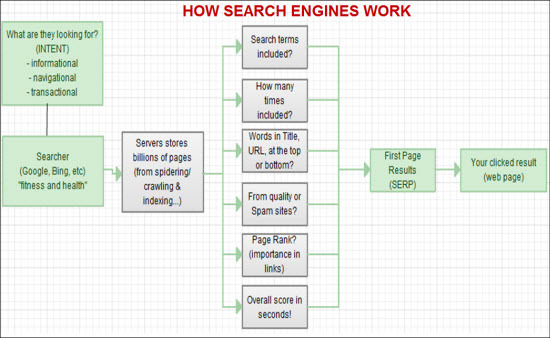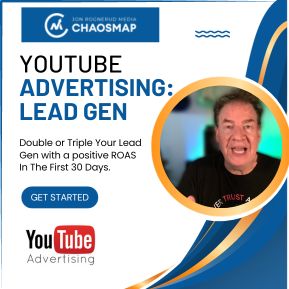If you are a business that is just starting out, you’ve been around for a while, or simply looking to grow to the next level — this post is for you.
Without a steady growth of potential prospects coming to your business (online or off) – you are facing a slow death. And, with rising expenses, office, staff, equipment overhead – you need a way to cover yourself.
Enter the search engines.
The beauty of search engines is that they can send visitors who are actively looking for you. You may choose several different strategies, from Paid (PPC) to Non-Paid (Organic SEO). However, most folks don’t visit your website and buy on the first touchpoint. You need to develop a user experience and a sales/marketing funnel to build trust, nurture the relationship over time. However, that’s for another post.
We want to know how search engines work.
Here is a simple informational graphic that explains how search engines work:

This represents many nights, days and years of work in the search technology field and breaks down how Google treats incoming requests (queries) specifically.
They start with the user first. (That should be your strategy as well). Then ask – are they searching for information only (in research mode), are they entering web addresses directly (known brand/URL), or are they more transaction or eCommerce based (compare/buy)? What keywords/phrases cover that market? Make sure they are included on designated pages – and in content and HTML (code).
You should do this next:
For your visitors and market place, understand and ask what they are commonly looking for? (do your keyword research and competitive research first).
Build out a plan for how you can serve them with relevant content and offers.
Make sure that you follow this graphic to see if your pages are serving the search engines as the final step. You can speak to your webmaster about the technical stuff.
Your job is to serve your audience, and match content to keywords and the audience – as well as building a reputation in social circles (Google+, LinkedIn, Twitter, Facebook, etc).
Jon Rognerud and Chaosmap work with Fortune 500 companies, small business and entrepreneurs to create digital traffic strategies that scale up customers, leads and sales with profitable returns. Mr. Rognerud wrote a best-selling book (Buy On Amazon), “The Ultimate Guide To Optimizing Your Website” (Entrepreneur). Connect directly here.







